Instruction
Turn, Turn, Turn: For every swing there is a reason
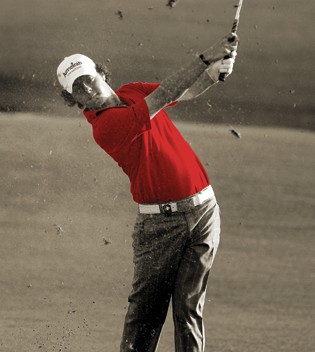
Slicing and hooking are nothing more than club face (in relation) to swing path issues. If the golf club is coming from inside and the club face is aimed at the target at impact, the golf ball will have left axis tilt, or hook spin. If the club is coming from outside and the face is aimed at the target at impact, the golf ball will have right axis tilt, or slice spin. This is assuming that you make contact in the center of the face, however. Heel hits and toe hits are a different matter entirely.
Many golfers tackle the problem of errant shots by attempting to change the angle of the club face at impact — they take a stronger grip or weaker grip, or they try to change their release. And there’s no question that you need a good grip to play good golf. But changing your grip will only change the angle of the club face at impact. Since physics shows that the club face is responsible for 75-85 percent of the initial direction of the golf ball, changing your grip will only impact the starting direction of the ball, not the curve of the ball. If you want a change in spin axis, you must change the face-to-path relationship.
You are probably asking yourself, “Ok DC, how do we do that? ” Let’s take a look at it in some detail.
An arc, by definition, is a curve. The correct swing arc for the club head is from the inside, to the ball, and back to the inside. (Note: For a right-handed golf, coming from the inside means approaching the ball from the side where he or she stands in relation to the ball). There is a small flat spot at the bottom of the swing, but the club head travels largely on a curve.
Now, to assist you in creating this curve, your body will need to rotate during the swing. The torso turns away from the target in the backswing and toward the target in the downswing. In other words, your backswing turn assists in creating room for you to swing from the inside. And your downswing turn assists in creating room to swing BACK to the inside. Notice I said “assist” because it is not a law that the arm swing follows the turning of the body. But it does create room to allow this to happen.
How can this help you with hooking or slicing?
If the club is traveling too much from outside, you need more BACKSWING turn to give you more room to swing from the inside. And if the golf club is traveling too much from the inside (hooking) you need more DOWNSWING turn to give you more room to swing from the outside, or at least straighter into the golf ball. So think “turn away” if you’re slicing and “turn through” if you’re hooking.
This also helps better players fade and draw the golf ball; draws and fades are milder versions of hooks and slices where the face-to-path ratio is reduced. I have my tournament players think maximum turn back, minimum turn through on draws and minimum turn back and maximum turn through on fades. Again, it reduces or increases the amount of inside, straight or outside path room available. Again this is not a guarantee that the turn assures the path in or out but it does help. Of course, sequencing also plays a big part in swing path; some players turn back well, but open the upper body too soon coming down. This, in effect, defeats the purpose of the turn in the first place.
The only long-term cure for a slice or a hook is a change in the face-to-path relationship. Focusing on the proper rotation can help in this.
Note: If you read my article “Golf is a Reaction Game” you will remember I said that in order to change your swing habits you need to change your ball flight. And this is where a grip or release change can help. By starting the ball more right or left, you can learn to create a better swing path in due course. But the face is a temporary fix, not a permanent solution. That is what is so invaluable about Doppler radar golf ball tracking systems like Trackman and Flightscope. We know the exact the face-to-path ratio. The only thing left to do is hit it in the center. But that’s another lesson.
As always, feel free to send a swing video to my Facebook page and I will do my best to give you my feedback.
Click here for more discussion in the “Instruction & Academy” forum.
- LIKE4
- LEGIT2
- WOW0
- LOL0
- IDHT0
- FLOP0
- OB0
- SHANK0
Instruction
Clement: Laid-off or perfect fade? Across-the-line or perfect draw?

Some call the image on the left laid off, but if you are hitting a fade, this could be a perfect backswing for it! Same for across the line for a draw! Stop racking your brain with perceived mistakes and simply match backswing to shot shape!
- LIKE0
- LEGIT0
- WOW0
- LOL0
- IDHT0
- FLOP0
- OB0
- SHANK1
Instruction
The Wedge Guy: The easiest-to-learn golf basic

My golf learning began with this simple fact – if you don’t have a fundamentally sound hold on the golf club, it is practically impossible for your body to execute a fundamentally sound golf swing. I’m still a big believer that the golf swing is much easier to execute if you begin with the proper hold on the club.
As you might imagine, I come into contact with hundreds of golfers of all skill levels. And it is very rare to see a good player with a bad hold on the golf club. There are some exceptions, for sure, but they are very few and very far between, and they typically have beat so many balls with their poor grip that they’ve found a way to work around it.
The reality of biophysics is that the body moves only in certain ways – and the particulars of the way you hold the golf club can totally prevent a sound swing motion that allows the club to release properly through the impact zone. The wonderful thing is that anyone can learn how to put a fundamentally sound hold on the golf club, and you can practice it anywhere your hands are not otherwise engaged, like watching TV or just sitting and relaxing.
Whether you prefer an overlap, interlock or full-finger (not baseball!) grip on the club, the same fundamentals apply. Here are the major grip faults I see most often, in the order of the frequency:
Mis-aligned hands
By this I mean that the palms of the two hands are not parallel to each other. Too many golfers have a weak left hand and strong right, or vice versa. The easiest way to learn how to hold the club with your palms aligned properly is to grip a plain wooden ruler or yardstick. It forces the hands to align properly and shows you how that feels. If you grip and re-grip a yardstick several times, then grip a club, you’ll see that the learning curve is almost immediate.
The position of the grip in the upper/left hand
I also observe many golfers who have the butt of the grip too far into the heel pad of the upper hand (the left hand for right-handed players). It’s amazing how much easier it is to release the club through the ball if even 1/4-1/2″ of the butt is beyond the left heel pad. Try this yourself to see what I mean. Swing the club freely with just your left hand and notice the difference in its release from when you hold it at the end of the grip, versus gripping down even a half inch.
To help you really understand how this works, go to the range and hit shots with your five-iron gripped down a full inch to make the club the same length as your seven-iron. You will probably see an amazing shot shape difference, and likely not see as much distance loss as you would expect.
Too much lower (right) hand on the club
It seems like almost all golfers of 8-10 handicap or higher have the club too far into the palm of the lower hand, because that feels “good” if you are trying to control the path of the clubhead to the ball. But the golf swing is not an effort to hit at the ball – it is a swing of the club. The proper hold on the club has the grip underneath the pad at the base of the fingers. This will likely feel “weak” to you — like you cannot control the club like that. EXACTLY. You should not be trying to control the club with your lower/master hand.
Gripping too tightly
Nearly all golfers hold the club too tightly, which tenses up the forearms and prevents a proper release of the club through impact. In order for the club to move back and through properly, you must feel that the club is controlled by the last three fingers of the upper hand, and the middle two fingers of the lower hand. If you engage your thumbs and forefingers in “holding” the club, the result will almost always be a grip that is too tight. Try this for yourself. Hold the club in your upper hand only, and squeeze firmly with just the last three fingers, with the forefinger and thumb off the club entirely. You have good control, but your forearms are not tense. Then begin to squeeze down with your thumb and forefinger and observe the tensing of the entire forearm. This is the way we are made, so the key to preventing tenseness in the arms is to hold the club very lightly with the “pinchers” — the thumbs and forefingers.
So, those are what I believe are the four fundamentals of a good grip. Anyone can learn them in their home or office very quickly. There is no easier way to improve your ball striking consistency and add distance than giving more attention to the way you hold the golf club.
More from the Wedge Guy
- The Wedge Guy: Golf mastery begins with your wedge game
- The Wedge Guy: Why golf is 20 times harder than brain surgery
- The Wedge Guy: Musings on the golf ball rollback
- LIKE88
- LEGIT14
- WOW6
- LOL1
- IDHT0
- FLOP4
- OB1
- SHANK8
Instruction
Clement: Stop ripping off your swing with this drill!

Not the dreaded headcover under the armpit drill! As if your body is defective and can’t function by itself! Have you seen how incredible the human machine is with all the incredible feats of agility all kinds of athletes are accomplishing? You think your body is so defective (the good Lord is laughing his head off at you) that it needs a headcover tucked under the armpit so you can swing like T-Rex?
- LIKE0
- LEGIT3
- WOW2
- LOL0
- IDHT0
- FLOP0
- OB0
- SHANK2
-

 19th Hole2 weeks ago
19th Hole2 weeks agoJustin Thomas on the equipment choice of Scottie Scheffler that he thinks is ‘weird’
-

 19th Hole2 weeks ago
19th Hole2 weeks ago‘Absolutely crazy’ – Major champ lays into Patrick Cantlay over his decision on final hole of RBC Heritage
-

 19th Hole3 weeks ago
19th Hole3 weeks agoReport: LIV Golf identifies latest star name they hope to sign to breakaway tour
-

 19th Hole3 weeks ago
19th Hole3 weeks agoNeal Shipley presser ends in awkward fashion after reporter claims Tiger handed him note on 8th fairway
-

 19th Hole3 weeks ago
19th Hole3 weeks agoBrandel Chamblee has ‘no doubt’ who started the McIlroy/LIV rumor and why
-

 19th Hole1 week ago
19th Hole1 week agoLET pro gives detailed financial breakdown of first week on tour…and the net result may shock you
-

 Equipment3 weeks ago
Equipment3 weeks agoJason Day on his recent switch into Srixon ZX5 and ZX7 Mk II irons
-
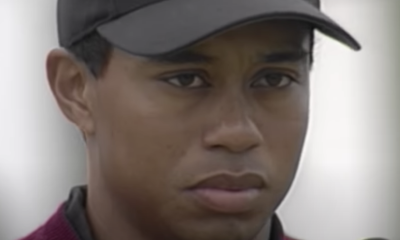
 19th Hole4 days ago
19th Hole4 days agoGary Player claims this is what ‘completely ruined’ Tiger Woods’ career










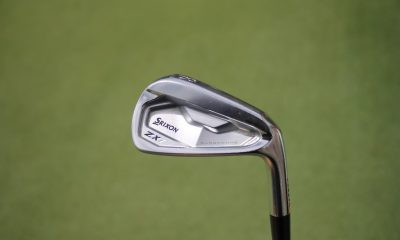

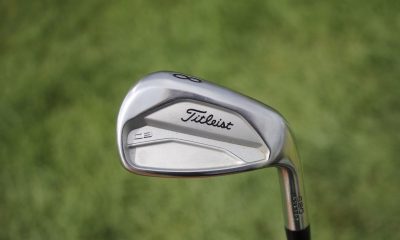

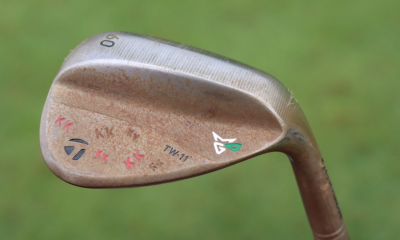

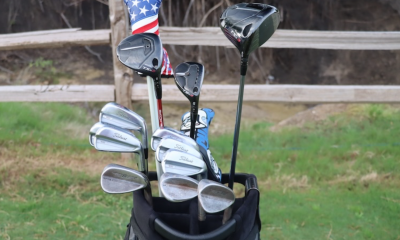

James
Jun 3, 2013 at 6:46 am
Great article. Helped me a ton. Thank you!
Scott
Nov 14, 2012 at 12:18 pm
I have a terrible swing. All upper body, all arms. No control. I absolutely have “the big banana” shot.
This article was the first thing that actually made sense to me and worked at the range. First time trying this I was 50-50 between shots at my target and pulls, BUT the ball flight completely changed. This produced a more piercing trajectory with rollout rather than my normal extreme side spin.
Thank you! Like Austin said, if you make it out to the SF Bay Area I owe you a meal of your choice!
Matt
Oct 26, 2012 at 11:04 pm
Read this article and decided to try it out on the range. Helped so much! I instantly could move it both ways and hit the ball so solid. So excited to see how it continues to help! Thanks!!
Pingback: GolfWRX.com – Turn, Turn, Turn: For every swing there is reason | Golf Grip Instruction
Austin
Oct 8, 2012 at 6:59 am
Dennis, Thanks for this tip! This is one of the best for immediate results. I took this to the course and it works. I hit 11 of 14 fairways when I have been hitting about 3-4 for 14. Had a ton of birdie putts and was working the ball both ways with your help! Thanks so much! If you are ever in Nashville I owe you lunch/dinner! Thanks again.
Anne
Oct 7, 2012 at 4:03 pm
GREAT. THANK YOU